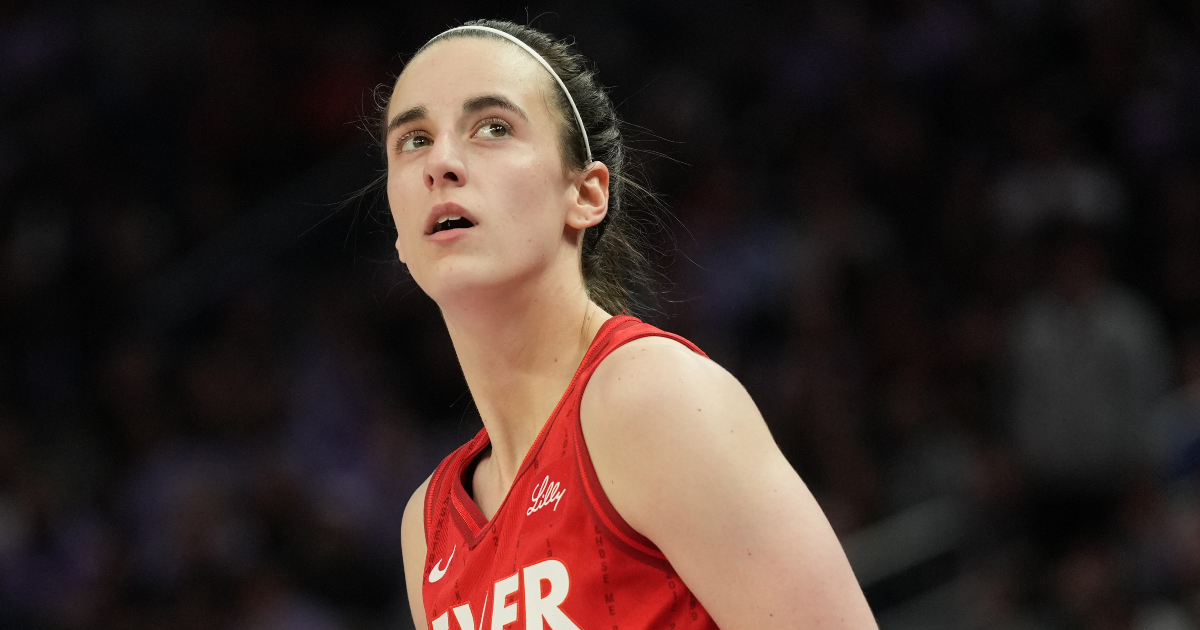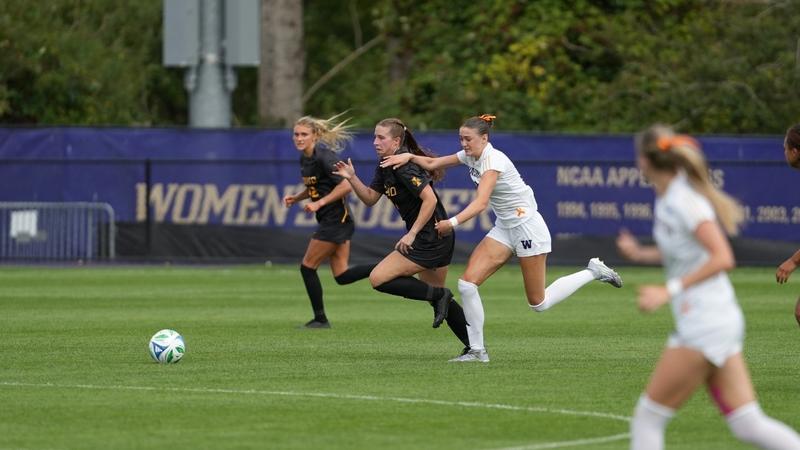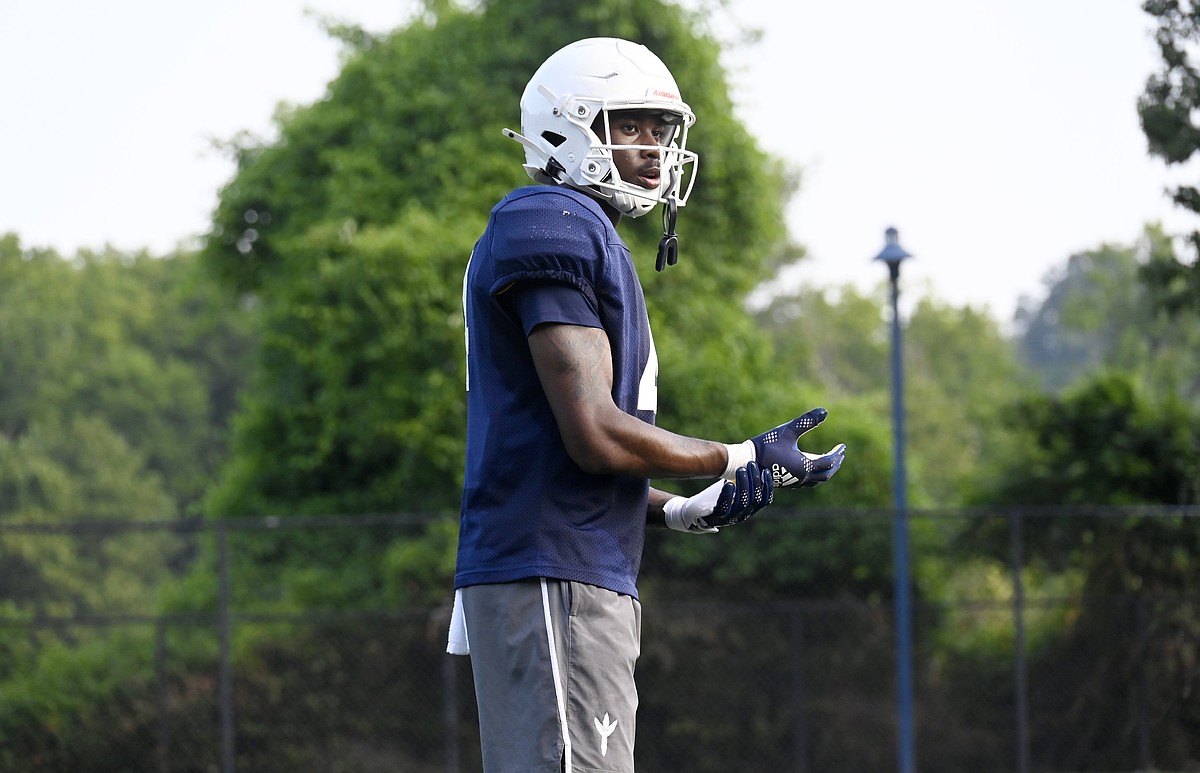NIL
Without Action, NIL Risks Entrenching Inequities (opinion)
When the National Collegiate Athletic Association authorized students to monetize their name, image and likeness (NIL) rights in 2021, the decision was framed as a transformative disruption of amateurism, a chance to democratize financial opportunities across all college athletes, regardless of gender, sport or institutional affiliation. Advocates envisioned a marketplace where visibility, entrepreneurship and merit […]



When the National Collegiate Athletic Association authorized students to monetize their name, image and likeness (NIL) rights in 2021, the decision was framed as a transformative disruption of amateurism, a chance to democratize financial opportunities across all college athletes, regardless of gender, sport or institutional affiliation. Advocates envisioned a marketplace where visibility, entrepreneurship and merit could eclipse systemic bias.
Four years later, the results are starkly disproportionate. Despite NIL’s promise of inclusion, early outcomes reveal a new iteration of entrenched hierarchies. Football and men’s basketball athletes capture the overwhelming majority of NIL earnings, while women athletes and athletes on nonrevenue teams fight for a marginal share of the market. Without deliberate structural reform, NIL threatens to entrench long-standing inequities under a modern guise.
NIL’s Uneven Impact
Industry data shows that nearly 80 percent of NIL dollars flow to male athletes, particularly in football and men’s basketball. Female athletes, even those with notable athletic success or strong social media presences, remain vastly underrepresented in the NIL economy.
Most Popular
Structural factors reinforce this disparity. Booster-backed NIL collectives, which pool financial resources to support athletes, heavily favor men’s sports. Corporate sponsorships and media deals mirror historical inequities, channeling investment into male-dominated programs while relegating women’s teams to the periphery. Visibility begets value, and in a marketplace where women’s sports still struggle for equitable media exposure, the playing field remains far from level.
NIL was not designed to correct these underlying market forces, but it now magnifies them. Without intervention, it risks solidifying a two-tiered economy in college athletics.
Structural Challenges on the Horizon
Experts in college athletics governance warn that emerging legal frameworks will further complicate the NIL landscape. The House v. NCAA settlement is slated for implementation on July 1. It will allow universities to directly share revenue with student athletes, capped at $20.5 million annually per institution.
Under this model, institutions must balance new forms of direct compensation with Title IX obligations and financial sustainability. Yet as legal scholars note, mechanisms for ensuring gender equity in relation to institutional NIL payments remain vague. Enforcement is expected to focus on egregious violations, not on proactively monitoring systemic disparities.
It is worth noting that these reforms are built around the infrastructure of the Power Four conferences, former Power Five members and high-revenue sports programs, leaving smaller institutions to bear the consequences. A key critique raised during policy discussions is that the NCAA is funding legal defenses and settlements (such as House v. NCAA) largely stemming from Power Five football, despite receiving no revenue from the College Football Playoff, which is independently operated by the conferences. The NCAA’s primary income source is March Madness, yet it shoulders the regulatory and legal burdens tied to football governance.
The settlement also introduces roster limits as a cost-control and Title IX compliance strategy. While reducing football roster sizes may create financial savings, roster limits risk unintended consequences: shrinking athletic opportunities and destabilizing programs that have historically expanded access for women. Institutions must tread carefully to avoid worsening inequities under the banner of financial reform. Fewer athletes also mean fewer enrolled students paying tuition and contributing to campus life, subtler but significant consequences for institutional sustainability.
Additionally, with federal guidance on NIL payments and Title IX in flux since the change in presidential administrations in January, it remains unclear how Title IX should apply to direct athlete compensation and NIL structures. This regulatory uncertainty is unfolding alongside a broader retrenchment in higher education equity efforts. Diversity, equity and inclusion initiatives have faced mounting political and legal challenges, with many institutions scaling back public-facing commitments to equity under state pressure or due to administrative caution.
For instance, states like Florida, Oklahoma and Texas have enacted laws and policies that dismantle DEI offices and restrict related programming at public universities. These states collectively host more than a dozen Power Four institutions, including prominent programs in the SEC and Big 12 conferences. The elimination of DEI infrastructure in these states not only limits institutional capacity to address equity in NIL implementation but also exacerbates compliance challenges under Title IX. In this climate, even well-intentioned NIL reforms risk deprioritizing gender equity, not only at institutions facing state legislative pressures, but across the broader higher education landscape, where structural limitations and regulatory ambiguity increasingly constrain equity-focused work.
Editors’ Picks
Without a coherent federal framework, institutions are left to interpret compliance on their own, often inconsistently and without the tools to embed gender equity into NIL design. As regulatory momentum builds, there is a real risk that top-down reforms will entrench existing hierarchies rather than dismantle them. Legal pressure is mounting as well: Cases against the NCAA are increasingly addressing more nuanced areas of NIL, including media rights, retroactive compensation and the classification of athletes as employees. These developments signal that without clear, equity-centered policy, institutions may soon find themselves not only out of compliance, but in court.
Building Equity by Design
Higher education must recognize that NIL is not just a financial or athletic issue; it is a fundamental equity issue. Institutions cannot afford to replicate old hierarchies under a new system.
Concrete steps forward include:
- Building equitable promotional strategies: Ensure comparable visibility across men’s and women’s sports by investing in joint marketing campaigns, content creation resources and equitable social media promotion, not just traditional media coverage.
- Implementing comprehensive NIL education programs: Offer workshops that directly address gender-based disparities in financial literacy, contract negotiation, branding strategies and legal rights, for both student athletes and coaching staffs.
- Strengthening institutional NIL infrastructure: Equip athletic departments with trained NIL administrators, general managers and compliance officers to support equitable deal facilitation and roster management across all sports, not just revenue teams.
- Structuring donor engagement more inclusively: Actively encourage booster support for women’s and Olympic sports by creating collective fundraising goals, incentive matches and branding opportunities that spotlight underrepresented teams.
- Embedding Title IX compliance at every stage: Require that institutional NIL deals undergo equity review for gender representation before approval and align NIL policies with broader Title IX audits to ensure systemic, not incidental, compliance.
- Expanding shared governance around NIL oversight: Engage faculty senates, equity officers and trustees in the design and review of NIL policies to ensure they align with broader institutional commitments to Title IX and educational access.
NIL offers unprecedented opportunities for student-athletes, but opportunity alone does not guarantee equity. Without intentional correction, the marketplace will reflect and reinforce historical biases. Colleges and universities must commit not merely to participating in the NIL era, but to shaping it in a way that honors the values of inclusion, fairness and educational purpose.
NIL
LaNorris Sellers Flaunts NIL Wealth With $185K Mercedes-Benz
iStockphoto / © Jeff Blake-Imagn Images Audio By Carbonatix South Carolina football star LaNorris Sellers is gearing up for his sophomore season in Columbia. The quarterback is hoping to build upon a phenomenal debut as the Gamecocks’ starter under center. That production as a redshirt freshman has him in Heisman trophy conversations ahead of the […]


iStockphoto / © Jeff Blake-Imagn Images

Audio By Carbonatix
South Carolina football star LaNorris Sellers is gearing up for his sophomore season in Columbia. The quarterback is hoping to build upon a phenomenal debut as the Gamecocks’ starter under center.
That production as a redshirt freshman has him in Heisman trophy conversations ahead of the 2025 college football season. It’s also resulted in a notable boost in NIL income.
Last year, Sellers guided the Gamecocks to a 9-3 output with wins over the likes of Clemson, Missouri, and Oklahoma. He threw for 2,500 yards and 18 scores while adding another 674 yards on the ground.
He hopes to build on his success this fall. Excitement surrounding his expected growth has those in the area eager to watch.
The LaNorris Sellers hype is real.
The signal caller burst onto the scene as a relative unknown in 2024. He’s now being mentioned as a potential top 10 NFL Draft pick in the 2026 selection process.
“When you see him at his best, he’s unstoppable. He’s a great runner when he takes off. Strong arm. Built well. Can handle the physical beating he’s going to take at quarterback and shake off sacks. Moves around really well.”
-Steve Muench via The McShay Show
Sellers can sling it. He can run, too. At 6-foot-3 and 240 pounds, he’s impossible to bring down. His dual threat abilities gave opposing defenses nightmares last year.
Sellers is considered a top Heisman trophy contender this preseason and a future pro prospect. He’s now cashing in on his newfound fame.
The football star will have a new car on the South Carolina campus this fall.
Sellers will renew an NIL partnership with Dick Dyer & Associates. He posted a comical ad on social media to announce the agreement.
In that commercial, he flaunted the perks of his deal by showing off his new ride. He’ll drive a 2025 Mercedes-Benz G63 this season, valued at $186,100.
LaNorris Sellers spoke on NIL poachers this offseason. He and his father said they turned down millions to stick around in Columbia.
The passer stayed loyal to the Gamecocks. He believes he can have everything he needs at South Carolina.
This new deal certainly supports that outlook, as does his $3.7 million NIL valuation. Sellers will be riding in style on campus this year.
NIL
Josh Heupel reacts to Tennessee switching back to adidas: ‘We’re fortunate’
After a decade with Nike, Tennessee is preparing to return to its former apparel partner. The school agreed to a lucrative 10-year deal with adidas this week, starting in 2026, which will make the Vols the company’s flagship university. Josh Heupel shared his reaction to that news this week and acknowledged the impact the agreement […]

After a decade with Nike, Tennessee is preparing to return to its former apparel partner. The school agreed to a lucrative 10-year deal with adidas this week, starting in 2026, which will make the Vols the company’s flagship university.
Josh Heupel shared his reaction to that news this week and acknowledged the impact the agreement will have on UT. Yahoo! Sports’ Ross Dellenger reported the deal includes a multi-million dollar NIL component. Adidas is even working quickly to secure deals with Vols athletes this school year. The new contract doesn’t officially start until next school year.
Heupel said Tennessee is “fortunate” to have such a lucrative opportunity. He also agreed with the excitement around the deal and the long-term effects both on and off the field.
“We’re fortunate,” Heupel said. “Had a partner that wanted to make us their flagship school. That’s going to happen in a lot of different ways and going to be a benefit to our football program, but this athletic department as a whole, too. They had an opportunity to come talk to some of our guys.
“I think everybody’s really excited that, again, we’re going to be the flagship school for them. It’s going to provide a lot of unique opportunities for our players on and off the field.”
How Tennessee’s adidas deal impacts NIL
The NIL component of Tennessee’s deal with adidas – which could be worth at least $10 million, according to Dellenger – is especially important in the post-House v. NCAA settlement landscape. Under the agreement, schools can share up to $20.5 million directly with athletes through revenue-sharing. However, there isn’t a cap on third-party NIL deals, meaning adidas can effectively help with “over-the-cap” opportunities.
“The arms race was originally about facilities,” said Chris McGuire, adidas Vice President of Sports Marketing for North America, while speaking with Yahoo! Sports. “Now it’s gone to rev-share and NIL. We want to make sure we provide opportunities to our partners that are competitive in the marketplace so they’ll have competitive teams on the field.”
If Tennessee athletes sign an NIL deal with adidas, they would be able to wear the company’s products in games once the new agreement gets in place. This year, though, those athletes would have to wear Nike apparel until that deal expires.
Tennessee left adidas in 2014 to sign with Nike, and the amended deal runs through 2026. Through the partnership, the university is due to receive $1.2 million in base compensation in 2025-26 and $4.5 million in annual product allotment.
NIL
Caitlin Clark injury update: Major update emerges on status for rest of Fever season
Caitlin Clark has been out with a groin injury since July 15. On Sunday, Indiana Fever head coach Stephanie White provided an update on Clark’s recovery when asked if the two-time WNBA All-Star will return before the end of the regular season. “That’s the hope. The hope is that she’s back,” White said, per ESPN. […]

Caitlin Clark has been out with a groin injury since July 15. On Sunday, Indiana Fever head coach Stephanie White provided an update on Clark’s recovery when asked if the two-time WNBA All-Star will return before the end of the regular season.
“That’s the hope. The hope is that she’s back,” White said, per ESPN.
In total, Clark has missed 21 games for the Fever this season. The team has posted an 8-5 record with Clark and a 10-11 record without her this season.
It’s been a roller coaster season without Caitlin Clark leading the way. The Fever have looked competent without their leader at times, only to appear clueless the very next game.
From late July to early August, the Fever won five consecutive games and seemed to finally be finding their rhythm. However, that sentiment quickly fell apart when Indiana lost four of its next five contests.
If the season ended today, the Fever would be the No. 3 seed in the Eastern Conference. Alas, it certainly wouldn’t hurt for Clark to ramp up to the playoffs with a few regular-season showings. After all, rust has been an obvious issue for the former Iowa standout this season when she’s attempted to return from injury.
Clark is averaging 16.5 points, 5.0 rebounds and 8.8 assists per game. However, she’s shooting just 36.7% from the field and 27.9% from beyond the arc. While Clark initially felt like she needed to return to the hardwood as quickly as possible, advice from her mom has led to her taking a more careful approach.
“Early on with the first couple injuries, I was like, ‘I need to get back,’” Clark said during an appearance on the Bird’s Eye View with Sue Bird podcast. “But I think my mom texted after this last injury, and they know how hard it’s been on me, but my mom was like, ‘You’ve taken so much time for everybody else, you have to take time for yourself now.’ So I’m just trying to do that the best I can, too.
“… ”But you do want to play, you want to give people something to cheer about or scream about. People spend so much time, and money, and resources to come and watch you play. And it’s been cool to see people continue to show up for my teammates, whether they’re fans of the Fever just fans of myself, they’re continuing to show up and support.”
The Fever have 10 games left in their regular season. The last game of the regular season is on Sept. 9.
NIL
South Carolina’s LaNorris Sellers signs NIL deal with Rhoback, Gamecocks fans get special offer
On Sunday night, activewear company Rhoback and South Carolina quarterback LaNorris Sellers announced a NIL apparel deal. Sellers, a redshirt sophomore from Florence, S.C., is the latest college football player to partner with Rhoback, joining Ohio State defensive back Caleb Downs, Texas A&M quarterback Marcel Reed and Penn State running back Nick Singleton. Support LaNorris Sellers’ […]

On Sunday night, activewear company Rhoback and South Carolina quarterback LaNorris Sellers announced a NIL apparel deal.
Sellers, a redshirt sophomore from Florence, S.C., is the latest college football player to partner with Rhoback, joining Ohio State defensive back Caleb Downs, Texas A&M quarterback Marcel Reed and Penn State running back Nick Singleton.
Support LaNorris Sellers’ partnership with Rhoback
“LaNorris brings a unique spark to everything he touches, and we knew from the start he’d be a perfect fit for Rhoback,” Rhoback spokesperson Shalen Moore said in a statement announcing the deal with Sellers. “He’s a natural leader, a competitor, and someone who’s building momentum fast. We’re excited to welcome him to the family and to help bring his story and style to life through this partnership.”
Last season, Sellers was named SEC Freshman of the Year after finishing with a pair of 300-yard passing games and two 100-yard rushing performances. He was voted as a Rex Enright team captain, the first freshman in school history to earn that award.
Sellers was the Steve Wadiak Team MVP and shared the Steve Spurrier MVP (offense) with running back Raheim Sanders.
“Joining Rhoback is a big-time move for me. The energy around the brand is real, and it’s something I’ve noticed for a while,” Sellers said. “Their gear is next level — whether it’s training, game day, or just everyday comfort. I’m hyped to be part of what they’re building and to rep it with pride. We’ve got some creative stuff coming that I think my people are going to really mess with. This isn’t just a collab — it’s a full partnership.”
In 12 games last season, Sellers completed 196-of-299 passes for 2,534 yards with 18 touchdowns. He finished second on the team in rushing with 166 carries for 674 yards and seven touchdowns.
Rhoback offers a variety of apparel for both men and women, including polos, quarter-zips, hoodies, t-shirts, vests, shorts, joggers, and hats. South Carolina fans can support Sellers and Rhoback U right here by placing an order through Rhoback.
NIL
Vandals Fall to Washington – University of Idaho Athletics
Next Game: at UMass Lowell 8/21/2025 | 4:15 p.m. Aug. 21 (Thu) / 4:15 p.m. at UMass Lowell History SEATTLE, Wash. – Idaho Vandal soccer fell to the University of Washington 4-0 Sunday afternoon at Husky Soccer Stadium in Seattle. The Vandals battled early with scoring chances in the […]

SEATTLE, Wash. – Idaho Vandal soccer fell to the University of Washington 4-0 Sunday afternoon at Husky Soccer Stadium in Seattle.
The Vandals battled early with scoring chances in the first half. UW took the lead on a goal in the 20th minute, but the Vandals tallied three shots on goal in the first half.
Washington notched three goals in the second half to extend the lead to 4-0 and close out the shutout win.
The Vandals are now 1-1 on the year. Idaho continues its road swing next week with an East Coast trip. The Vandals play UMass Lowell on Thursday, Aug. 21, and Stonehill College (Mass.) Aug. 23.
NIL
Back home in Chattanooga, AJ Wallace ready to help UTC defense
In a lot of ways, A.J. Wallace is home. Where football is concerned, he has found a home on defense at the University of Tennessee at Chattanooga, where he transferred this summer after redshirting as a freshman last season at Arkansas State. He’s 0



In a lot of ways, A.J. Wallace is home.
Where football is concerned, he has found a home on defense at the University of Tennessee at Chattanooga, where he transferred this summer after redshirting as a freshman last season at Arkansas State.
He’s
-

 Health2 weeks ago
Health2 weeks agoThe Women Driving A New Era In U.S. Ski & Snowboard
-

 NIL2 weeks ago
NIL2 weeks agoESPN Announces 'dont wait run fast' by mgk as New College Football Anthem for 2025
-

 Rec Sports2 weeks ago
Rec Sports2 weeks agoSwimming & Diving Comments on the Rules – 2025-26
-

 Technology2 weeks ago
Technology2 weeks agoAmid Sports Chaos, ‘Known’ Data and Outcomes Help Agency Win
-

 Rec Sports2 weeks ago
Rec Sports2 weeks agoSternberg named new youth center director | News, Sports, Jobs
-

 College Sports2 weeks ago
College Sports2 weeks agoRep. Pugh: The Red Sand Project brings awareness to ‘very serious issue’
-

 Youtube2 weeks ago
Youtube2 weeks ago🚨 BREAKING NEWS 🚨 Micah Parsons requests trade from the Dallas Cowboys | SportsCenter
-

 Motorsports1 day ago
Motorsports1 day agoNASCAR’s Bold Sponsorship Move: Anduril Steps into the Fast Lane as Defense Technology Meets Racing Dram
-

 High School Sports3 weeks ago
High School Sports3 weeks agoKentucky Basketball Offers 7
-

 Health6 days ago
Health6 days agoClinical psychologist discusses student
































